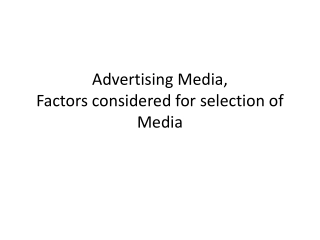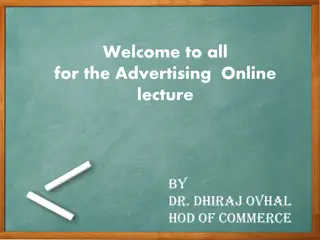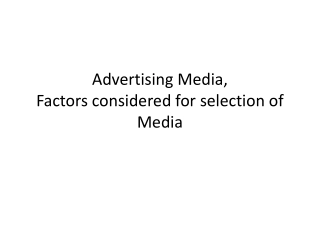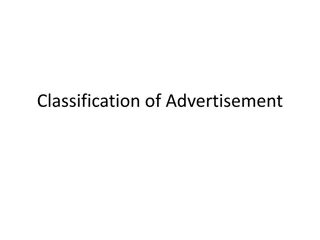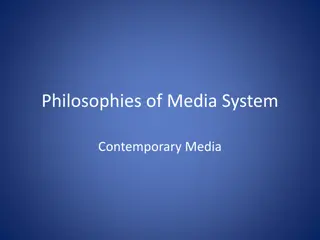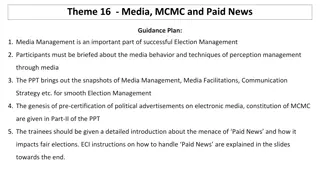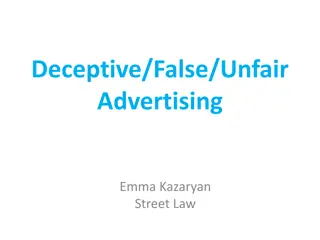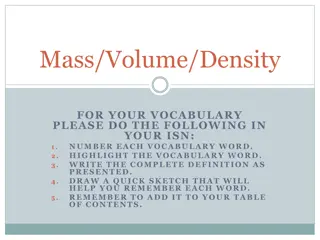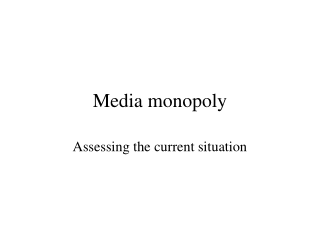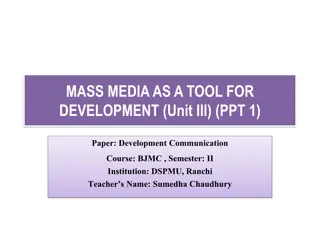Understanding Mass Media and Advertising in Management Communication N4
Explore the role of mass media and advertising in communication processes, including types of media, functions of mass media, language choices, manipulative reporting, propaganda techniques, advertising principles, and effective advertising requirements. Engage in various activities to enhance learning and understanding in this module.
Download Presentation

Please find below an Image/Link to download the presentation.
The content on the website is provided AS IS for your information and personal use only. It may not be sold, licensed, or shared on other websites without obtaining consent from the author. Download presentation by click this link. If you encounter any issues during the download, it is possible that the publisher has removed the file from their server.
E N D
Presentation Transcript
MANAGEMENT COMMUNICATION N4 MR MABULA BETHLEHEM CAMPUS
MODULE 5 MASS MEDIA AND ADVERTISING
IN THIS MODULE 5 WE DISCUSS THE FOLLOWING: 1. THE MAIN MASS MEDIA (Print, audio, audio-visual, electronic, library, outdoor) 2. Communication process employed by the mass media 2.1 Definition of mass media 2.2 Mass media process 2.3 Elements of mass media 2.4 Differences between mass communication and interpersonal communication 3. Functions of the mass media 4. The language employed by the mass media 4.1 Aspects determining the choice of language 4.1.1 Target group 4.1.2 Objective (purpose) 4.2 Objective and subjective usage 4.3 Register, tone and style of rational vs emotional (persuasive) communication 4.4 The fine line separating ethical rhetoric from manipulative reporting and propaganda
5, Manipulative reporting 5.1 Techniques used in manipulative reporting 6. Propaganda 6.1 Definition 6.2 Elements of propaganda 6.2.1 Ethos 6.2.2 Logos 6.2.3 Pathos 6.3 Techniques employed by the propagandist
7. Advertising in the mass media 7.1 Definition of advertising 7.2 Purpose of advertising 7.3 Criticism against advertising 8. Advertising principles: Aspects of consumer behaviour 8.1 Cultures and subcultures 8.2 Social class 8.3 Social mobility, conformity/non-conformity and reference groups 8.4 Information processing by consumers 9. Requirements for effective advertising 9.1 AIDA principle 9.2 Product/service 9.3 Target audience 9.4 Aim of the advertisement 9.5 Presentation styles 9.5.1 Factual (hard sell) 9.5.2 Imaginative (soft sell) 9.5.3 Negative presentation 9.5.4 Humorous presentation
ACTIVITIES MASS MEDIA 1. Activity 5.2 (Page 115) 2. Activity 5.4 (Page 118) 3. Activity 5.7 (Page 120) 4. Activity 5.9 (Page 123) 5. Activity 5.11 (Page 126)



